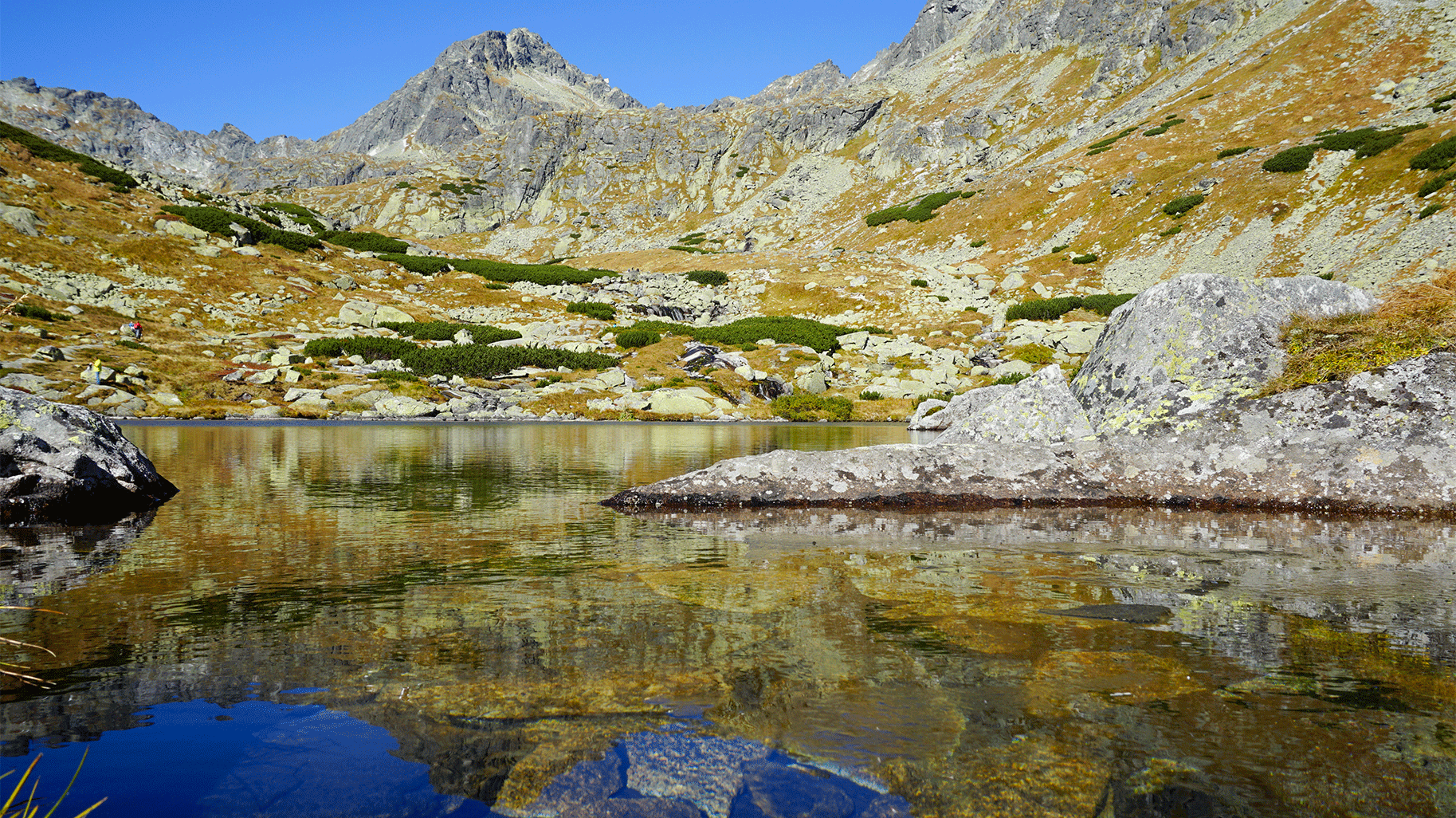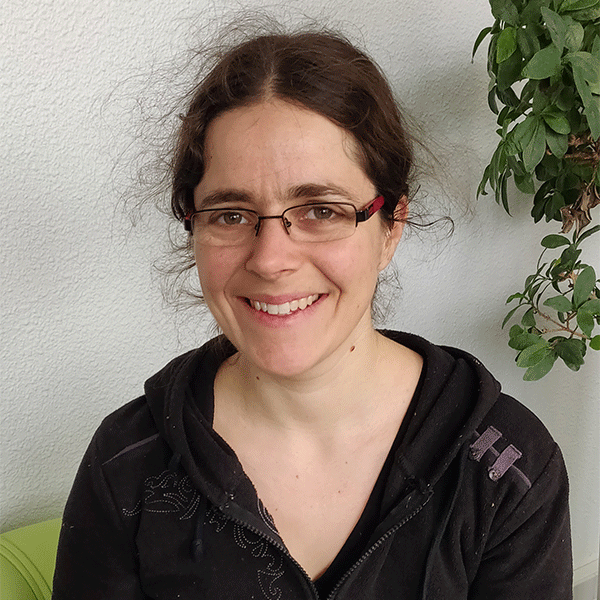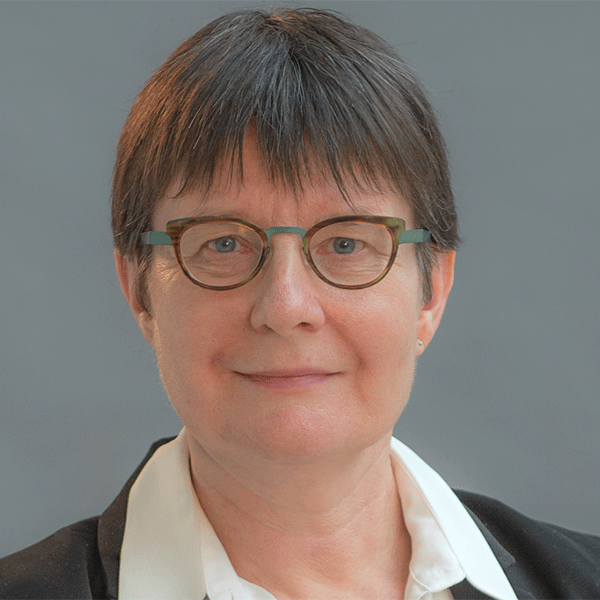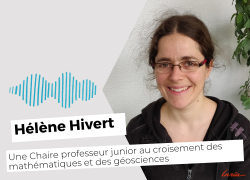
Created as part of France’s 2020 research planning law, and following the tenure track model used in the US and the UK, junior professor chairs are 3 to 6-year posts that can eventually lead to a permanent position as a director of research. It was this scheme which Inria used to recruit Hélène Hivert, enabling the centre to strengthen its ties with the University of Rennes while promoting multidisciplinary research with resonance in digital.
The mathematician had previously worked as an associate professor at the École Centrale Lyon. Prior to that, after studying at the Brittany campus of ENS Cachan, she completed a PhD at the Rennes Institute of Mathematical Research (Irmar).
A specialist in the digital analysis of partial differential equations (PDEs), Hélène Hivert has now joined Géosciences Rennes, a joint research unit of the CNRS and the University of Rennes.

Verbatim
The aim is to promote research at the intersection of mathematics and geoscience. In this particular instance, the focus is on water flow modelling. The majority of the scientists I’ve been dealing with here in Rennes are also working on this topic, at different levels. Some are studying the movement of water at a microscopic level in porous environments, while others are studying drainage basin dynamics. Pollution is a recurring issue.
Head of the Modéliterre Junior Professorship
For Hélène Hivert, this is a totally new world. “I knew nothing about this field. The first phase of my job has involved meeting my new colleagues in order to develop a proper understanding of what it is they’re doing. From them I’ve heard about the mathematical problems they have encountered during modelling. I've already identified quite a few, including some that it should be possible to solve, but some of the others seem incredibly complex. It’s a case of digging deeper, trying to come up with ways of simplifying things. The problems I’m looking at are quite approximate. I then have to go back to the researchers to find out if they think it could be worthwhile.”
Establishing ties between Géosciences and the Irmar
The purpose of this first phase is to give Hélène an opportunity to sort through these problems and select those which could be the subject of more extensive mathematical research. “Looking further ahead, the goal is to establish ties between Géosciences and the Irmar by bringing together mathematicians with the abilities to help solve these problems. It will be great if we can knock on the right door with one of these complex problems.”
Following this initial period, it will then be time to decide on projects which scientists from the two institutes will be able to participate in. “Before long we will be on to the tendering process.” In fact, this has actually already started. “Jean-Raynald de Dreuzy is a researcher with Géosciences and was involved in the creation of this chair. When I first arrived, he was waiting for me with a question on mathematics applied to hydrology. This was an opportunity for us to immediately respond to a call for proposals launched by the Institut des mathématiques pour la planète Terre (the Institute of Mathematics for Planet Earth). Our proposal actually went much further than the initial question, and we are hoping to recruit a PhD student soon to work on this subject.”
The medium-term goal is to put together a group of scientists straddling the two disciplines, which could go on to become a research team in its own right. “But we still have a long way to go.”
The ‘Science for the Environment’ course at ENS Rennes
Aside from the research aspect, there is also a teaching component to Hélène’s job. “This is linked to the creation, this year, of the Science for the Environment department at ENS Rennes, where two courses are being developed.”
The first of these is a CPES or multidisciplinary further studies course, an undergraduate course leading to a bachelor’s degree or equivalent. The second is a PhD Track Master’s level degree in Environmental Transition. The M1 Master’s course has just started with five students.
Eventually, it is expected that there will be around thirty or so individuals across the two graduating classes (M1 and M2). Currently, there are four Master’s courses in the Rennes area which this concerns, but plans are in place to open up to a few more further down the line.
“By bringing me into this department, the aim was to add a degree of multidisciplinarity. I arrived here as a mathematician to provide students with methodological tools for use in the highly disciplinary field of environmental science.”
Creating new multidisciplinary teams

Verbatim
Scientific risk-taking is written into the Objectives and Performance Contract which Inria signed with the government for 2019-2023”. “The aim is to promote the extension of research topics and to help new disciplines to emerge. The way we see it, digital has a vital role to play as a lever for interdisciplinarity. The points where disciplines meet create new challenges in digital, which is our core business.
Head of Science at the University of Rennes Inria Centre
As for Hélène Hivert’s junior professor chair, meanwhile, “this is a seed we’ve planted in the hope that it will eventually lead to a joint team with the Géosciences Rennes laboratory, an integral part of Osur within the environment hub. It is also in keeping with IRIS-E, a project that was a winner as part of the “Excellence In All Its Forms” programme funded through the Future Investments Programme, which was really important for the site. This project is centred around issues relating to water.”
This strategy is also being deployed at a local level. “One of the long-term objectives outlined in the agreement our Inria centre signed with the University of Rennes in 2022 was the creation of an interdisciplinary team for each of the university’s five hubs: mathematics and digital, biology and health, the environment, materials, and the human, organisational and social sciences. As far as the first of these is concerned, we already have 23 joint teams with the Irisa, the university’s computer science laboratory, plus three teams with the Irmar, the mathematics laboratory. In biology and health there is EMPENN, a team that is working on neuroimaging. But we would like to create more.”
“The junior professor chair system complements the other mechanisms we have for recruiting young researchers, whether it’s as research fellows or to ISFP (Inria Starting Faculty Positions). The latter is also relatively new, this being the fourth year that we've used it. But the creation of more multidisciplinary teams won’t necessarily lead to junior professor chairs. That decision will be made on a case-by-case basis.”
“By doing so, we are following the institute’s national policy of using the junior professor chair system to promote interdisciplinary and multidisciplinary activities which are consistent with the policies of the sites where these centres are located. We feel that this is a good mechanism for scientific risk-taking and trying to create a team, making it possible to recruit researchers who are not total novices, but who already have some experience. In principle, after six years the researchers recruited to junior professor chairs within the institute will be made permanent directors of research.”

Know more about Geosciences junior professor chair (french)